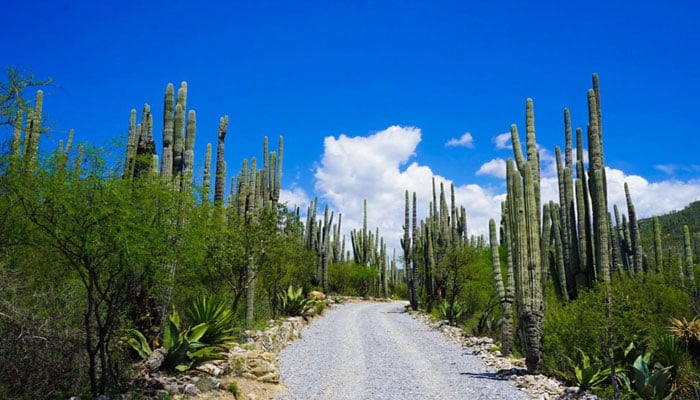MEXICO CITY: The Tehuacan-Cuicatlan Valley, home to the oldest water management system in North America, was added Monday as a "mixed site" to the UNESCO World Heritage list, reflecting its significance as both a natural and cultural area.
Straddling the Mexican states of Puebla and Oaxaca, the rugged, cactus-filled reserve that spreads across a 145,255 hectare (359,000 acres) area was first nominated to the list two years ago.
It is described by Mexico´s department for the environment as "the smallest of all the country´s arid regions" and a habitat for unique species, including the densest forests of large columnar cacti and of examples of endangered wildlife, such as the royal eagle."
The area, described by UNESCO as having "the richest biodiversity in all of North America" is home to 141 species of birds, including hummingbirds which are important pollinators for cacti.
It contains ten percent of the 30,000 species of vascular plants -- which use vessels to distribute water and minerals through the body of the plant -- in Mexico and includes agaves, yuccas and oaks.
Its cultural significance stems from the fact that it is home to "an exceptional water management system of canals, wells, aqueducts and dams, the oldest in the continent, which has allowed for the emergence of agricultural settlements" in the Neolithic period, UNESCO said.
The archeological remains from the period, when hunter-gatherers became settled farmers, also includes rock paintings, graves, mounds and citadels.
The area has been under state protection since 1998 and in 2012 was declared a biosphere reserve.
Tehuacan, situated in Puebla, means "place of the gods" in the indigenous Nahuatl language, while Cuicatlan is in Oaxaca state and its name means "the land that sings."
-
King Salman leaves hospital after 'reassuring' medical tests
-
Snow storm warning in Ontario’s weather forecast through Tuesday
-
Canada and China trade deal: All you need to know about the new agreement
-
South Korea’s ex-president Yoon Suk Yeol, sentenced to 5 years in prison: Key details explained
-
Sarah Hartsfield murder conviction prompts review of past fiancé killing
-
Restaurant workers detained after ICE agents dine at Minnesota eatery
-
Florida man held after alleged nail-scattering on busy intersections
-
Mississippi postal worker arrested after complaints of marijuana odour in letters













